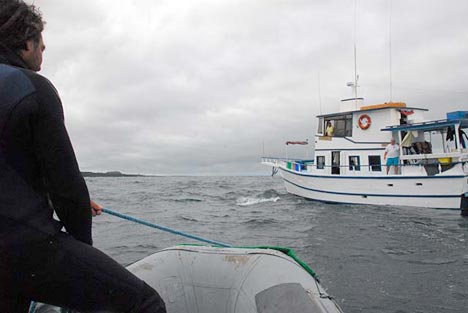


My name is Mariana Vera, and I’ve been involved in conservation for more than 7 years. Right now I am working as an associate researcher in the marine coastal research area of the Charles Darwin Foundation in Galapagos (Ecuador). As a science diver, my work is centered around ecological monitoring and I specialize in taxonomic identification of sessile species (such as corals, tunicates, gorgonians, sponges and algae among others). I have had the opportunity to be involved and participate in various science projects that work to improve our understanding of the islands. Some of the work that I do includes:
I’ve asked Stuart to write a short description of the scientific background behind the dive program that is at the heart of the research cruise that I have been fortunate enough to participate in and that description can be found at the bottom of this journal entry. However, I wanted to try and graphically illustrate what these amazing folks have done three times a day, every day of this cruise regardless of conditions.

For those of you who are chronologically oriented, here is a summary of our week at sea aboard the M/V Queen Mabel as she explored the western part of the Galapagos Archipelago. Below is a map showing the complete cruise track with the general areas that we visited outlined and below that are the detailed locations of each of the dive sites and where we anchored for the night (A):

In this day of high speed computers, sophisticated satellite observation systems and the continuously connected world in which we do our science, it has been quite a eye opening and muscle straining experience to realize that people still do oceanographic research the old fashioned way — by hand! The ocean waters around the Galapagos teem with life and nowhere is the abundance of phytoplankton, those microscopic floating plants that form the base of the marine food web and essentially support all life in the oceans greater, than in the western part of the Archipelago, exactly where our cruise has taken us. Supported by the nutrient-rich upwelling of the eastward flowing Equatorial Undercurrent also known historically as the Cromwell Current, and as some believe, fertilized by the iron-rich micronutrients that these volcanic islands have in abundance, the waters between Fernandina and Isabela have some of the highest phytoplankton concentrations anywhere. The waters are literally green, more closely resembling a diluted pea soup than the deep blue ocean waters that most people associate with the open sea.
